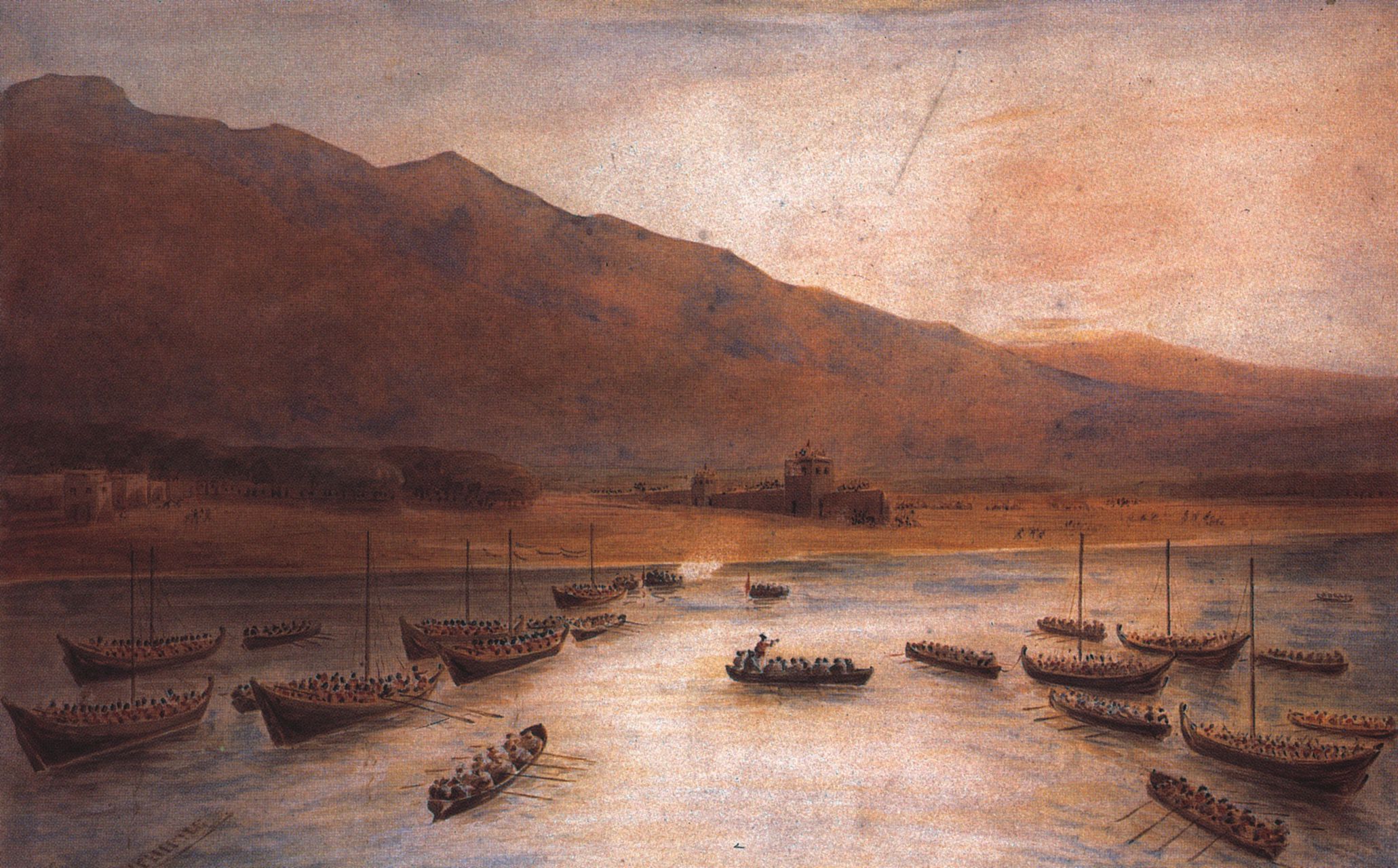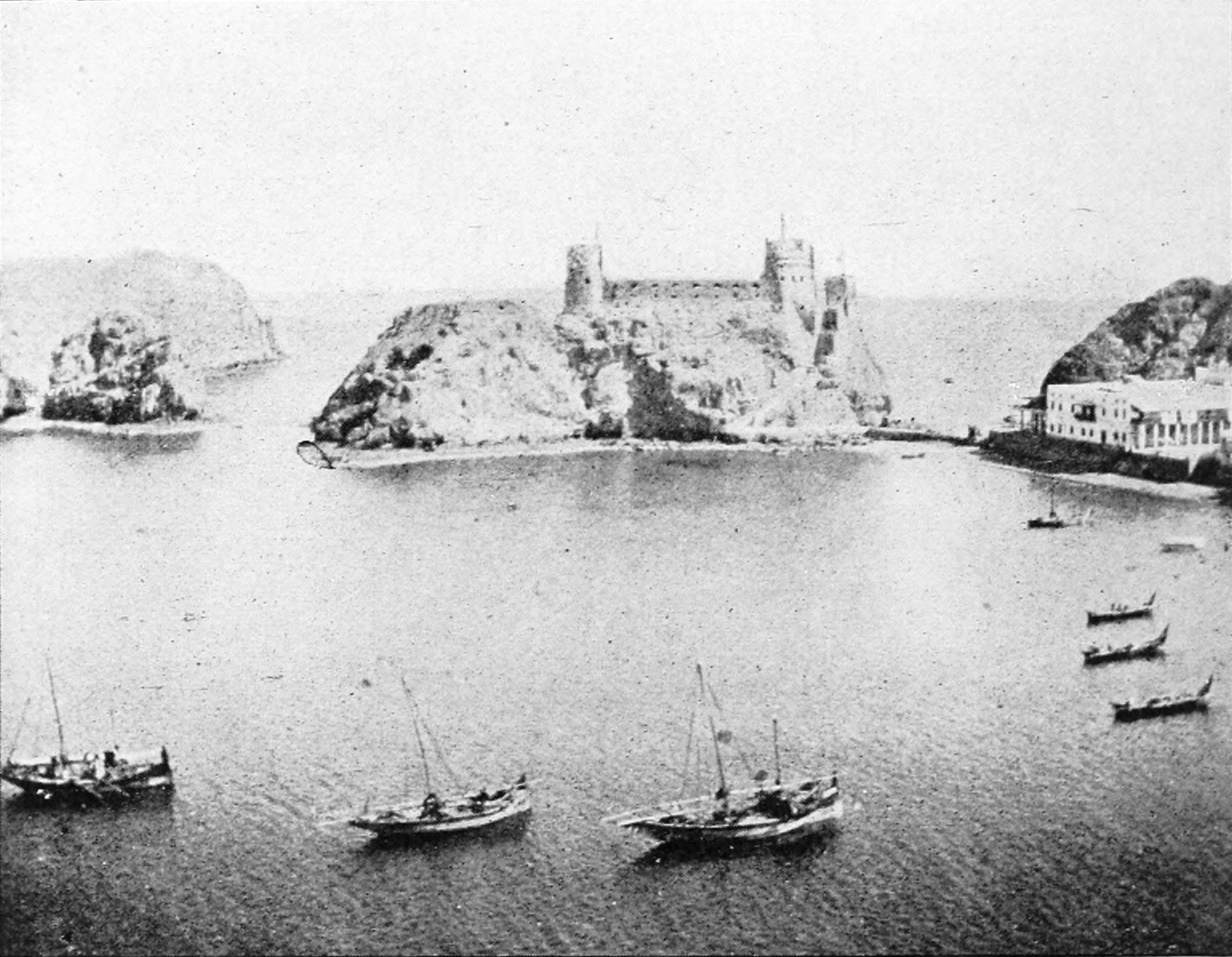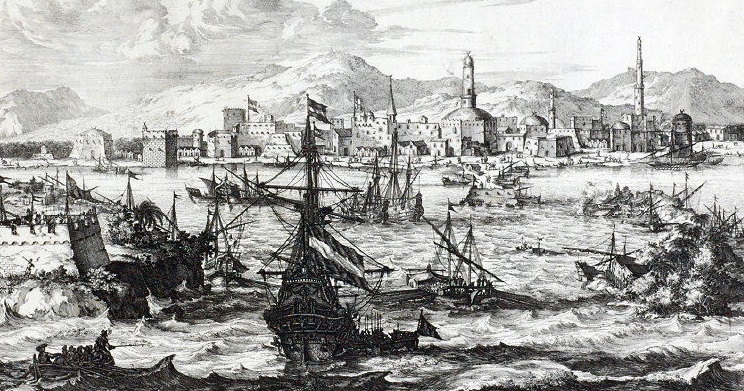|
Sultan Bin Saqr Al Qasimi
Sheikh Sultan bin Saqr Al Qasimi (1781–1866) was the Sheikh of the Qawasim and ruled the towns of Sharjah, Ras Al Khaimah, Jazirah Al Hamra and Rams; all within the then Trucial States and now part of the United Arab Emirates. Briefly a dependent of the first Saudi Kingdom, his rule over Ras Al Khaimah ran from 1803–1809, when he was deposed by order of the Saudi Amir and restored in 1820, going on to rule until his death in 1866 at the age of 85. He was Ruler of Sharjah from 1814–1866, with a brief disruption to that rule in 1840 by his elder son Saqr. He was a signatory to various treaties with the British, starting with the General Maritime Treaty of 1820 and culminating in the Perpetual Maritime Truce of 1853. Rule A characteristic of Sultan's rule is that he placed relatives as '' walis'' or headmen of the emirates under his rule and so Ras Al Khaimah was effectively ruled by Mohammed bin Saqr, Sultan's brother, from 1823 until his death in 1845, while anothe ... [...More Info...] [...Related Items...] OR: [Wikipedia] [Google] [Baidu] [Amazon] |
Al Qasimi
The Al Qasimi (, spelled sometimes as Al Qassimi or Al Qassemi; plural: Al Qawasem and, archaically, Joasmee) is an Arab dynasty in the Persian Gulf that rules Emirate of Sharjah, Sharjah and Emirate of Ras Al Khaimah, Ras Al Khaimah, today forming two of the seven emirates of the United Arab Emirates. They are one of the longest reigning royal families in the Arabian Peninsula, Arabian peninsula. Historically, they also ruled over the town of Bandar Lengeh, Lengeh as sheikhs for a century until its annexation by Iran in 1887. Historically, the "Qawasim" were a confederation of Sunni Islam, Sunni Tribes of Arabia, tribes in south eastern Gulf region surrounding the cities of Ras al-Khaimah and Sharjah; and faced strong rivalry with the Omani Empire, Omani empire for naval domination along the Persian Gulf. Due to their allegiance to the Wahhabism, Wahhabi Emirate of Diriyah, Emirate of Dir'iyah, the British Empire branded them as "pirates" and fought two major military campaigns ... [...More Info...] [...Related Items...] OR: [Wikipedia] [Google] [Baidu] [Amazon] |
Persian Gulf
The Persian Gulf, sometimes called the Arabian Gulf, is a Mediterranean seas, mediterranean sea in West Asia. The body of water is an extension of the Arabian Sea and the larger Indian Ocean located between Iran and the Arabian Peninsula.United Nations Group of Experts on Geographical NameWorking Paper No. 61, 23rd Session, Vienna, 28 March – 4 April 2006. accessed 9 October 2010 It is connected to the Gulf of Oman in the east by the Strait of Hormuz. The river delta of the Shatt al-Arab forms the northwest shoreline. The Persian Gulf has many fishing grounds, extensive reefs (mostly rocky, but also Coral reef, coral), and abundant pearl oysters, however its ecology has been damaged by industrialization and oil spills. The Persian Gulf is in the Persian Gulf Basin, which is of Cenozoic origin and related to the subduction of the Arabian plate under the Zagros Mountains. The current flooding of the basin started 15,000 years ago due to sea level rise, rising sea levels of ... [...More Info...] [...Related Items...] OR: [Wikipedia] [Google] [Baidu] [Amazon] |
Hassan Bin Rahma Al Qasimi
Hassan bin Rahma Al Qasimi was the Sheikh (ruler) of Ras Al Khaimah from 1814–1820. He was accused by the British of presiding over a number of acts of maritime piracy, an assertion he denied. Despite signing a treaty of peace with the British in October 1814, a punitive expeditionary force was mounted against Ras Al Khaimah in December 1819 and Hassan bin Rahma was removed as Sheikh of Ras Al Khaimah, which he ceded to the British in a preliminary agreement to the General Maritime Treaty of 1820. Rule The nephew of the Ruler of Emirate of Ras Al Khaimah, Sultan bin Saqr Al Qasimi, Hassan bin Rahma emerged as the de facto Ruler of Ras Al Khaimah in 1814, although it is likely his rule started before this time. He was a dependent of the ruler of the first Saudi state, Abdulla Ibn Saud (and his father Saud bin Abdulaziz before him). During a visit to Abdulla in Riyadh in August 1814, Hassan bin Rahma received a letter from the British Resident at Bushire accusing him of ... [...More Info...] [...Related Items...] OR: [Wikipedia] [Google] [Baidu] [Amazon] |
Bandar Lengeh
Bandar Lengeh () is a city in the Central District of Bandar Lengeh County, Hormozgan province, Iran, serving as capital of both the county and the district. Bandar Lengeh is a port city on the Persian Gulf, from Lar, from Bandar Abbas, and from Bushehr. The weather in Bandar Lengeh is hot and humid, typical of coastal cities in southern Iran. History Lengeh was a center for trade between Oman and Iran for over 60 years, from 1759 to 1814. After 1814, Bandar Abbas played a major role in regional trade. Demographics Language The linguistic composition of the city: Population At the time of the 2006 National Census, the city's population was 25,303 in 5,589 households. The following census in 2011 counted 30,478 people in 6,735 households. The 2016 census measured the population of the city as 30,435 people in 8,452 households. Climate Bandar Lengeh has a hot desert climate (Köppen climate classification ''BWh'') with hot summers and mild winters. Precipitat ... [...More Info...] [...Related Items...] OR: [Wikipedia] [Google] [Baidu] [Amazon] |
British Troops Landing At Ras Al Khaimah 1809 By J
British may refer to: Peoples, culture, and language * British people, nationals or natives of the United Kingdom, British Overseas Territories and Crown Dependencies. * British national identity, the characteristics of British people and culture * British English, the English language as spoken and written in United Kingdom of Great Britain and Northern Ireland and, more broadly, throughout the British Isles * Celtic Britons, an ancient ethno-linguistic group * Brittonic languages, a branch of the Insular Celtic language family (formerly called British) ** Common Brittonic, an ancient language Other uses *People or things associated with: ** Great Britain, an island ** British Isles, an island group ** United Kingdom, a sovereign state ** British Empire, a historical global colonial empire ** Kingdom of Great Britain (1707–1800) ** United Kingdom of Great Britain and Ireland (1801–1922) * British Raj, colonial India under the British Empire * British Hong Kong, colonial Ho ... [...More Info...] [...Related Items...] OR: [Wikipedia] [Google] [Baidu] [Amazon] |
Indian Ocean
The Indian Ocean is the third-largest of the world's five oceanic divisions, covering or approximately 20% of the water area of Earth#Surface, Earth's surface. It is bounded by Asia to the north, Africa to the west and Australia (continent), Australia to the east. To the south it is bounded by the Southern Ocean or Antarctica, depending on the definition in use. The Indian Ocean has large marginal or regional seas, including the Andaman Sea, the Arabian Sea, the Bay of Bengal, and the Laccadive Sea. Geologically, the Indian Ocean is the youngest of the oceans, and it has distinct features such as narrow continental shelf, continental shelves. Its average depth is 3,741 m. It is the warmest ocean, with a significant impact on global climate due to its interaction with the atmosphere. Its waters are affected by the Indian Ocean Walker circulation, resulting in unique oceanic currents and upwelling patterns. The Indian Ocean is ecologically diverse, with important ecosystems such ... [...More Info...] [...Related Items...] OR: [Wikipedia] [Google] [Baidu] [Amazon] |
Said Bin Sultan
Sayyid Saïd bin Sultan al-Busaidi (, , ) (5 June 1791 – 19 October 1856) was Sultan of Muscat and Oman, the fifth ruler of the Al Bu Said dynasty from 1804 to 4 June 1856. His rule began after a period of conflict and internecine rivalry of succession that followed the death of his father, Sultan bin Ahmad, in November 1804. He is often referred to as the Lion of Oman (), as one of the greatest Omani sultans. Said's uncle Qais bin Ahmad finally agreed to Said's primacy after Said had killed his cousin, Badr bin Saif, a pretender to the throne. Said is noted for moving his capital to Zanzibar, where it remained during the time when the Omani Empire reached the zenith of its power and wealth. Early years Said bin Sultan was son of Sultan bin Ahmed, who ruled Oman from 1791 to 1804. Sultan bin Ahmed died in 1804 on an expedition to Basra. He appointed Mohammed bin Nasir bin Mohammed al-Jabry as the Regent and guardian of his two sons, Salim bin Sultan and Said bin Sultan. ... [...More Info...] [...Related Items...] OR: [Wikipedia] [Google] [Baidu] [Amazon] |
Muscat
Muscat (, ) is the capital and most populous city in Oman. It is the seat of the Governorate of Muscat. According to the National Centre for Statistics and Information (NCSI), the population of the Muscat Governorate in 2022 was 1.72 million. The metropolitan area includes six provinces, called , and spans approximately . Known since the early 1st century CE as a leading port for trade between the west and the east, Muscat was ruled successively by various indigenous tribes, as well as by foreign powers such as the Persians, the Portuguese Empire and the Ottoman Empire. In the 18th century, Muscat was a regional military power: its influence extended as far as East Africa and Zanzibar. As an important port town in the Gulf of Oman, Muscat attracted foreign traders and settlers such as the Persians, the Balochs and the Sindhis. Beginning in 1970, after the accession of Qaboos bin Said as the Sultan of Oman, Muscat experienced rapid infrastructural development; it developed ... [...More Info...] [...Related Items...] OR: [Wikipedia] [Google] [Baidu] [Amazon] |
Mokha
Mokha (), also spelled Mocha, or Mukha, is a port city on the Red Sea coast of Yemen. Until Aden and al Hudaydah eclipsed it in the 19th century, Mokha was the principal port for Yemen's capital, Sanaa. Long known for its coffee trade, the city gave its name to Caffè mocha, Mocha coffee. Overview Mocha was the major marketplace for many commodities, including, but not limited to coffee (''Coffea arabica'') from the 16th century through the 19th century. The coffee itself did not grow in Mocha, but was transported from Ethiopia and inland Yemen to the port in Mocha, where it was then shipped abroad. Even after other sources of coffee were found, Mocha coffee bean, ''Mocha'' beans (also called ''Sanani'' or ''Mocha Sanani'' beans, meaning ''from Sana'a'') continued to be prized for their distinctive flavor—and remain so even today. Mocha's coffee legacy is reflected in the name of the Caffè mocha, mocha latte and the Moka pot coffee maker. In Germany, traditional Turkish ... [...More Info...] [...Related Items...] OR: [Wikipedia] [Google] [Baidu] [Amazon] |
Yemen
Yemen, officially the Republic of Yemen, is a country in West Asia. Located in South Arabia, southern Arabia, it borders Saudi Arabia to Saudi Arabia–Yemen border, the north, Oman to Oman–Yemen border, the northeast, the south-eastern part of the Arabian Sea to the east, the Gulf of Aden to the south, and the Red Sea to the west, sharing maritime boundary, maritime borders with Djibouti, Eritrea, and Somalia across the Horn of Africa. Covering roughly 455,503 square kilometres (175,871 square miles), with a coastline of approximately , Yemen is the second largest country on the Arabian Peninsula. Sanaa is its constitutional capital and largest city. Yemen's estimated population is 34.7 million, mostly Arabs, Arab Muslims. It is a member of the Arab League, the United Nations, the Non-Aligned Movement and the Organisation of Islamic Cooperation. Owing to its geographic location, Yemen has been at the crossroads of many civilisations for over 7,000 years. In 1200 BCE, the Sab ... [...More Info...] [...Related Items...] OR: [Wikipedia] [Google] [Baidu] [Amazon] |
Diriyah
Diriyah (; formerly romanization of Arabic, romanized as Dereyeh and Dariyya) is a towns in Saudi Arabia, town and governorate in Saudi Arabia. Located on the northwestern outskirts of the Saudi capital, Riyadh, Diriyah was the original home of the House of Saud, and served as the capital of the First Saudi state, Emirate of Diriyah under the first Saudi dynasty from 1727 to 1818. Today, the town is the seat of the Diriyah Governorate, which also includes the villages of Uyayna, Jubail, Jubayla, and Al-Ammariyyah, among others—and is part of Riyadh Province. At-Turaif District, the first capital of Saudis in Diriyah, was declared a World Heritage Site, UNESCO World Heritage Site in 2010. The layout of the city itself can be studied in the National Museum of Saudi Arabia with the help of a large-scale detailed model of the city on display there. Diriyah also hosted the Diriyah ePrix race for the Formula E championship from 2018–2024. Location The ruins of the old city of Diriy ... [...More Info...] [...Related Items...] OR: [Wikipedia] [Google] [Baidu] [Amazon] |
Al Bithnah Fort
Bithnah Fort is a traditional double story rock, coral and mudbrick fortification located in the Wadi Ham, near the village of Al Bithnah, Bithnah in Emirate of Fujairah, Fujairah, United Arab Emirates. The fort has played a significant role in the history of the Emirates, particularly in the emergence of Fujairah as an independent emirate in the early 20th century. With a controlling position overlooking the Wadi Ham, the fort replaced an Iron Age in the United Arab Emirates, Iron Age fortification. Prior to the construction of the metalled road between Fujairah City and Masafi in the 1970s, traffic to the interior from the coast passed through the bed of the wadi, controlled by Bithnah Fort, which has through the ages been a keenly contested strategic holding and was to form a key mainstay in the fortunes of the Sharqiyin through the 18th and early 19th centuries. The fort Bithnah Fort is a rectangular construction with two round corner towers. A rectangular guard's room giv ... [...More Info...] [...Related Items...] OR: [Wikipedia] [Google] [Baidu] [Amazon] |








